Fidgeting is defined as making little motions with your body, most commonly your hands or feet. It is related to inattention and frequently reflects pain and restlessness. And have you ever wondered how to stop fidgeting?
[ninja_tables id=”73199″]
For example, if you’ve been undergoing a lecture for a long period, one could find oneself tapping your pencil, and one wonders when he/she started doing that, and how to refrain from doing that whether consciously, or unconsciously.
Do you find yourself fidgeting if you’re uncomfortable, anxious, or stressed? When you’re in a difficult event, your feet and hands seem to have a consciousness of their own, and you can’t just can’t seem to remain still despite how uncomfortable or awkward you seem.
You are not alone. Millions of others have the same tendency as you and are continuously trying to determine how to stop fidgeting.
If you are here reading this, then you are just in the right place for you. This article will explain all there is to know about fidgeting, what causes it and ways you can learn how to stop fidgeting.
Alright, let’s move.
The Overview on Fidgeting – What are Fidgets?

As we have already established in our intro above that fidgeting is defined as making little motions with your body, most commonly your hands or feet. It is related to inattention and frequently reflecting pain and restlessness.
Fidgeting is described as a state of vague bodily unease that seeks alleviation through irregular body motions. To fidget[mfn]https://en.wikipedia.org/wiki/Fidgeting[/mfn] means to move about tensely, restlessly, or uncomfortably.
It is not unusual to notice a person sitting at rest, possibly reading, who alters the posture of his legs repeatedly, uncrossing and crossing them without being aware of the motions. Fidgeting, on the other hand, might be an indication of hyperactivity and attention deficit disorder[mfn]Mayo Clinic Staff. (2019). Attention-deficit/hyperactivity disorder (ADHD) in children. mayoclinic.org/diseases-conditions/adhd/symptoms-causes/dxc-20196181[/mfn] (ADHD), Restless Leg Syndrome[mfn]5 ways you can conquer restless legs at night. (2017). health.clevelandclinic.org/2014/06/5-ways-you-can-conquer-restless-legs-at-night/?_ga=1.123423627.1009864428.1477767691[/mfn] (RLS) or essential tremor[mfn]Essential tremor. https://medlineplus.gov/ency/article/000762.htm[/mfn].
For example, if you’ve been undergoing a lecture for a long period, one could find oneself tapping your pencil[mfn]Farley J, et al. (2013). Everyday attention and lecture retention: The effects of time, fidgeting, and mind wandering. DOI: 10.3389/fpsyg.2013.00619[/mfn], sometimes mercilessly against your laps, desk or books without realizing that you are doing so. This is fidgeting, and trust me, many people have been finding ways on how to stop fidgeting.
Fidgeting may help you feel more awake by increasing your physiological arousal. Fidgeting is a bodily activity that may give a momentary diversion from whatever you’re doing.
Some experts think that the “mental break” provided by fidgeting is your body’s attempt to concentrate on the work at hand. According to another study, a fidgeting body just mirrors a wandering mind.
Fidgeting may also be caused by stress. Fidgeting might help reduce stress in some people. You can watch the video below to know more on fidgeting:
Symptoms of Fidgeting – What Should You Look Out For?
Signs of mild fidgeting can include movements of the head, limbs, and body. Common types of fidgeting include:
- Tapping your foot, your fingernails, or a pencil
- Blinking your eyes
- Shifting your weight
- Folding and unfolding your arms
- Crossing and uncrossing your legs
If your fidgeting is disrupting your ability to perform your daily activities, sleep at night, or manage at school or work, you should see a doctor.
What Causes Fidgeting?

Fidgeting may be a result of nervousness, frustration, agitation, boredom, ADHD, excitement, or a combination of these. When interested in a task, a seated person will suppress their fidgeting, a process described as Non-Instrumental Movement Inhibition (NIMI).
Some education researchers consider fidgeting, along with noise-making, as clear signs of inattention or low lecture quality, although educators point out that active engagement can take place without constantly directing attention to the instructor (i.e. engagement and attention are related but not equivalent).
Fidgeting is often a subconscious act and is increased during spontaneous mind-wandering. Some researchers have proposed that fidgeting is not only an indicator of diminishing attention but is also a subconscious attempt to increase arousal in order to improve attention.
While inattention is strongly associated with poor learning and poor information recall, research by Dr. Karen Pine and colleagues found that children that are allowed to fidget with their hands performed better in memory and learning tests.
A 2014 study also found that children with ADHD performed better on some cognitive tasks when they are engaged in “more intense [spontaneous] physical activity”, although no such correlation was seen in children without ADHD.
Fidgeting is considered a nervous habit, though it does have some underlying benefits. People who fidget regularly tend to weigh less than people who do not fidget because they burn more calories than those who remain still, which is called Non-Exercise Activity Thermogenesis (NEAT).
It has been reported that fidgeting burns about 350 extra calories per day, which could add up to about 10 to 30 pounds (4 – 13 kg) a year. Fidgeting may be a result of genetics and some are born with a propensity to be fidgety. Fidgeting can also be a medical sign, as seen in hyperthyroidism. Hyperthyroid patients may be restless, become agitated easily, display fine tremors, and have trouble concentrating.
Fidgeting may help you feel more awake by increasing your physiological arousal. Fidgeting is a bodily activity that may give a momentary diversion from whatever you’re doing.
Some experts think that the “mental break” provided by fidgeting is your body’s attempt to concentrate on the work at hand. According to another study, a fidgeting body just mirrors a wandering mind.
Fidgeting may also be caused by stress. Fidgeting might help reduce stress in some people.
Mild fidgeting appears to be caused by inattention. Serious fidgeting can be caused by conditions such as attention deficit hyperactivity disorder[mfn]Attention Deficit Hyperactivity Disorder. https://www.nimh.nih.gov/health/topics/attention-deficit-hyperactivity-disorder-adhd/index.shtml/index.shtml[/mfn] (ADHD), essential tremor, and restless leg syndrome[mfn]Restless legs syndrome fact sheet. (2019). ninds.nih.gov/disorders/restless_legs/detail_restless_legs.htm[/mfn] (RLS). Even fidgeting has also been associated with Parkinson’s disease.
Fidgeting and ADHD

There are three types of ADHD: inattentive, hyperactive, and combined. Hyperactive and combined ADHD may produce the following behaviors:
- Fidgeting and squirming
- Difficulty with quiet activities
- Excessive talking
- Interrupting others often
These symptoms are often typical of children. You should see a doctor if these symptoms are interfering with your child’s social or academic functioning.
ADHD can be difficult to diagnose in adults because many of the symptoms are similar to mental disorders such as anxiety, bipolar disorder, and depression. If you’re experiencing the following symptoms, you may want to consult a doctor:
- Restlessness
- Mood swings
- Impatience
- Difficulties in maintaining relationships
- Difficulties in finishing tasks
- Difficulties in concentrating
There’s no single cause of ADHD. The disorder is present at birth and isn’t caused by environmental factors. Risk factors include:
- Genetics
- Low birth weight
- Head injury
- Brain infection
- Iron deficiency
- Exposure to lead, alcohol, tobacco, or cocaine before birth
Fidgeting and RLS
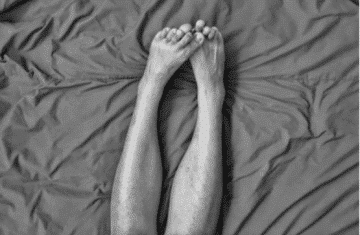
Fidgeting at night can be a symptom of RLS. This is a neurological disorder that causes an uncomfortable feeling in your legs and a strong desire to move them. Symptoms usually happen at night during sleep or when you’re trying to relax.
It’s estimated that about 7 percent to 10 percent of the U.S. population have RLS. You should talk to your doctor if RLS is seriously affecting your sleep.
The cause of RLS isn’t known. But RLS can be triggered by long periods of inactivity, such as a long car trip, a long-distance flight, or a long movie.
Fidgeting and Essential Tremor
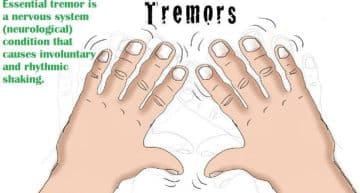
Essential tremor which was formerly known as benign essential tremor[mfn]Essential Tremor Information Page. https://www.ninds.nih.gov/Disorders/All-Disorders/Essential-Tremor-Information-Page[/mfn] is a nervous system condition characterized by involuntary movements and rhythmic shaking. A tremor is an unintended, somewhat rhythmic muscular movement characterized by to-and-fro motions (oscillatory) of one or more body parts.
Essential tremor may affect practically any portion of your body, but it most often affects your hands, particularly while doing basic activities like drinking from glasses, eating, writing, stitching, or tying shoelaces.
The most prevalent kind of aberrant tremor is essential tremor. (In other cases, tremor is a sign of a neurological condition or an adverse reaction to certain medications. Other illnesses do not produce essential tremors; however, it is sometimes mistaken for Parkinson’s disease.
In some persons, essential tremor is moderate and nonprogressive; in others, the tremor is gradually progressive, beginning solely on a single side of the body but ultimately affecting both sides).
Although hand tremors are the most prevalent, they may also affect the arms, legs, trunk, head, voice, and tongue. Head tremors might be seen as a “yes-yes” (up/down) or “no-no” (side-to-side) movement. A minor gait disturbance may accompany an essential tremor. Tremors may be triggered or exacerbated by physical weariness, low blood sugar, fever, increased emotion, or stress.
In those with essential tremors, there may be modest degeneration in particular areas of the cerebellum. Although symptoms may emerge at any age, they are more frequent after the age of 40.
Children with an essential tremor parent have a 50% risk of inheriting the disorder. Involuntary here indicates that you tremble without attempting and are unable to cease shaking at will.
The most prevalent kind of tremor is essential tremor. Everyone experiences tremors, but the motions are frequently so slight that they are imperceptible. Both women and men are affected by essential tremor. It is more frequent in adults over the age of 65.
There is no recognized disease linked with essential tremor. It is uncertain what causes essential tremor. According to research, the region of the brain that governs muscle activity does not function properly in patients with essential tremors.
A genetic mutation seems to be responsible for around half of all essential tremor cases, while no particular gene has been identified. A familial tremor arises when essential tremor affects over one member of a family.
This sort of essential tremor gets handed down from generation to generation (inherited). This shows that genes are involved in the cause. Tremor is often inherited as a dominant feature.
This implies that to develop the tremor, you only need to inherit the gene from a single parent. It usually starts around middle age, although it may appear in persons of any age, including youngsters.
While essential tremor isn’t really life-threatening, it may make everyday chores difficult and unpleasant for certain individuals. Tremor prevalence may decrease with age, but the intensity may grow, impairing the person’s ability to do some everyday duties or activities. Many people’s tremors are modest throughout their lives.
If the tremors grow severe, you may struggle to:
- Keep a cup/glass from spilling
- Eat freely
- Apply makeup or shave
- Speak up if your voice box or tongue is impaired.
- Make your writing legible
Parkinson’s disease vs. Essential tremor

Many people link tremors with Parkinson’s disease; however, the two disorders are fundamentally different in the following aspects:
- Tremor occurrence: When you utilize your hands, essential tremor of hands frequently arises. Parkinson’s disease tremors are most noticeable when the hands are at the sides or resting on your lap.
- Conditions that are related: Although essential tremor is not related with other health issues, Parkinson’s disease is linked with bent posture, delayed movement, and shuffling gait. People with essential tremor, on the other hand, may acquire additional neurological indications and symptoms, for example, an unsteady gait (ataxia).
- Affected bodily parts: Essential tremor mostly affects your hands, head, and speech. Parkinson’s disease tremors often begin in the hands and may spread to the legs, chin, and other regions of the body.
Does Fidgeting Have any Benefits?
It’s also important to note that not all fidgeting is negative, and these behaviors may have some health benefits. Fidgeting may even reverse some of the negative health outcomes of sitting. The following benefits of fidgeting:
- Increased flow of blood: Sitting for long periods of time is known to decrease blood flow to the legs, leading to an increased risk of high blood pressure (hypertension) and hardening of the blood vessel walls (atherosclerosis). A 2016 study found that fidgeting with your legs and feet while sitting increases the blood flow to the legs and improves blood vessel functioning.
- Increased brain retention: Fidgeting may also lead to improved information retention. A 2015 study found that when children with ADHD were allowed to fidget and squirm during a learning task, their retention rates improved.
- Speedy metabolism: How about if fidgeting might aid in the burning of calories? According to a Mayo Clinic research, persons who fidgeted during the day burnt an additional 350 calories!
- Improved focus: The cognitive load theory is a notion. It implies that when confronted with complicated issues or critical thinking, bodily motions (fidgeting) assist us to release some of our cerebral resources so that we may focus more of our minds on the subject at hand.
- Reduced risk of death: You probably know that sitting all day raises your risk of dying from heart disease. Sitting for long periods of time is known to decrease blood flow to the legs, leading to an increased risk of high blood pressure (hypertension) and hardening of the blood vessel walls (atherosclerosis). In combination with exercise and a good diet, fidgeting may help reduce your risk of mortality from extended sitting. According to a research, sitting seven or even more hours per day increases the risk of death only for persons classified as “low fidgeters.” People who fidgeted, on the other hand, were not at a higher risk of dying.
Notwithstanding all of these advantages, fidgeting may be unpleasant, disruptive, and humiliating at times. Failure to sit still at a meet, date, job interview, or other stressful circumstances may be embarrassing and can impede your professional and personal life.
The last issue you want is to get passed over when applying for a job since the interviewer believes you can’t maintain your cool under pressure. So, with that stated, you want to really know how to stop fidgeting. Keep reading to find out how to stop fidgeting.
Should You Be Worried that You are Fidgeting? – Does Fidgeting Have any Side Effects?
For most people, occasional fidgeting is normal and does not require intervention. It’s time to see a healthcare provider when fidgeting has begun to interfere with your life, such as your ability to perform your job or participate in school.
It’s important to remember that frequent fidgeting does not necessarily mean that you have a health problem. Lifestyle factors such as skipping meals or not getting enough sleep can result in increased stress and fidgeting symptoms.
Children may fidget in school if the learning materials are too advanced or not challenging enough. If you are concerned by you or your child’s fidgeting behaviors, talk with your healthcare provider.
How to Stop Fidgeting? – How Can Fidgeting Be Treated?
Understanding the cause of your fidgeting may help you treat its symptoms. If you know that you’re prone to mild fidgeting, try doing activities that are more engaging.
More severe fidgeting caused by ADHD can be treated with prescription drugs and counseling. A doctor can diagnose your ADHD through medical, educational, and psychological evaluations.
Psychostimulant drugs like methylphenidate are often prescribed to manage ADHD. Their side effects can include:
- Sleep disturbance
- Decrease in appetite
- Depression, sadness, or anxiety
- Headaches
- Upset stomach
- Increase in blood pressure
Doctors may also prescribe antidepressants or anti-anxiety drugs. Sometimes, your doctor may recommend a combination of medications. Your ADHD can also be managed with counseling. A counselor can help you develop skills to cope with the symptoms of ADHD[mfn]http://www.nimh.nih.gov/health/topics/mental-health-medications/index.shtml[/mfn].
Severe fidgeting caused by RLS can be treated with prescription medications. You can also try managing your RLS with the following techniques:
- Take a warm shower or bath before bedtime.
- Try a mindful activity before bedtime, such as reading a book or doing a crossword puzzle.
- Take a quick walk before bed.
- Try lightly massaging your legs before you sleep.
As for fidgeting caused by essential tremor or Parkinson’s disease, there is currently no treatment for that. If the symptoms of essential tremor are minor, some patients might not need therapy. However, if the essential tremor makes it challenging to work or conduct everyday tasks, talk to your doctor about treatment alternatives.
Propranolol or even other beta-blockers, as well as primidone, an anticonvulsant medication[mfn]http://www.fda.gov[/mfn], may be used to treat symptoms. Caffeine as well as other stimulants are often indicated as tremor “triggers” to avoid in the diet. Some people may benefit from occupational and physical therapy to lessen tremors and better coordination and muscular control.
Deep brain stimulation is the use of a surgically implanted, battery-powered medical device known as a neurostimulator to give electrical stimulation to specific parts of the brain that govern movement, temporarily inhibiting the nerve impulses that cause tremor. Other surgical procedures are helpful but may have negative effects.
Wanna know more tips on how to stop fidgeting, watch the video below to do so:
DIY and Home Remedies to Treat Your Fidgeting – How to Stop Fidgeting Without Going for Treatment or Contacting a Doctor or Physician
- Folding your Hands:
 If you have a tendency to fidget with the hands, folding them is one of the top best things you can do. Some may advise you to fold the arms or curl your hands, but this is incredibly scary and off-putting your body language, as well as giving you a mean demeanor. However, folding your hands helps you appear less hostile and shut off, and much more attentive. Folding your hands is a wonderful strategy to reduce fidgeting in professional settings, such as a conference or job interview since it is casual enough to not seem unduly official, yet more professional than burying your wrists in your pockets or squirming. If you’re standing, fold the hands and wrap them around your body. Check out this link to watch Ally’s posture while speaking in a social anxiety video. She seems peaceful, serene, and confident just by folding her hands.
If you have a tendency to fidget with the hands, folding them is one of the top best things you can do. Some may advise you to fold the arms or curl your hands, but this is incredibly scary and off-putting your body language, as well as giving you a mean demeanor. However, folding your hands helps you appear less hostile and shut off, and much more attentive. Folding your hands is a wonderful strategy to reduce fidgeting in professional settings, such as a conference or job interview since it is casual enough to not seem unduly official, yet more professional than burying your wrists in your pockets or squirming. If you’re standing, fold the hands and wrap them around your body. Check out this link to watch Ally’s posture while speaking in a social anxiety video. She seems peaceful, serene, and confident just by folding her hands. - Caffeine and sugar should be avoided:
 If you have a tendency to become hyperactive and full of energy when you are frightened or concerned, you may begin to fidget as a consequence. That’s why drinking a lot of coffee or sugar is among the bad things fidgeters can do. There’s a reason why millions of Americans depend on coffee to keep them going throughout the day. It is intended to be stimulating and an energy enhancer. While this may help you get through the day occasionally, it may definitely push your fidgeting tendency into overdrive. Most individuals will not want to stop coffee and sugar cold turkey since it will expose them to a variety of withdrawal symptoms. However, limit your usage on days that you know you’ll be doing something stressful or nervous about. So, what is the limit? The common view is that 400 milligrams of caffeine (roughly four cups per day) is plenty for the typical individual.
If you have a tendency to become hyperactive and full of energy when you are frightened or concerned, you may begin to fidget as a consequence. That’s why drinking a lot of coffee or sugar is among the bad things fidgeters can do. There’s a reason why millions of Americans depend on coffee to keep them going throughout the day. It is intended to be stimulating and an energy enhancer. While this may help you get through the day occasionally, it may definitely push your fidgeting tendency into overdrive. Most individuals will not want to stop coffee and sugar cold turkey since it will expose them to a variety of withdrawal symptoms. However, limit your usage on days that you know you’ll be doing something stressful or nervous about. So, what is the limit? The common view is that 400 milligrams of caffeine (roughly four cups per day) is plenty for the typical individual. - Try the Rubber Band Method:
 The rubber band technique is one of the ancient “hacks” for breaking bad behaviors such as smoking, nail-biting, or fidgeting. This is how it works:
The rubber band technique is one of the ancient “hacks” for breaking bad behaviors such as smoking, nail-biting, or fidgeting. This is how it works:
- Wrap a rubber band around your wrist loosely. You do not however want it to feel too tight on the skin.
- Snap the band against your wrist when you start to fidget.
You’ll eventually learn to correlate the pain of the band to fidgeting and, hopefully, correct the habit. A habit takes approximately 18-30 days to acquire or break. So don’t expect to quit fidgeting after a day or a week of employing the rubber band approach. You must be consistent, and you will eventually teach yourself to quit fidgeting. If you want to add a contemporary touch to this rubber band approach, tryPavlok. It’s a similar idea, only it’s a band you wear on your wrist, similar to a FitBit. It has an app that allows you to send little zaps to the bracelet anytime you feel the need to fidget. Pavlok’s 5-minute for five days habit exercise is one of its interesting features. Essentially, you execute the behavior you’re attempting to stop (fidgeting) for five days, five minutes a day. Then, for the next five minutes, utilize Pavlok. According to their testimonies, the challenge helped many people change long-standing habits, so it’s well worth a go.
4. Exercise Mindfulness: 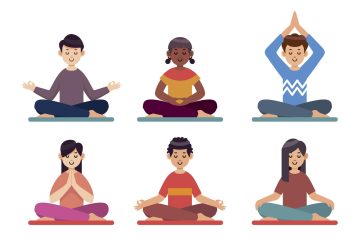 You’ve undoubtedly heard about mindfulness at some time in your life. Mindfulness is the discipline of being mindful and conscious of your surroundings. People often fidget because they are unable to concentrate on their thoughts. If you have difficulty concentrating, it may seem hard to keep your thoughts quiet enough to concentrate in a single instant. However, studies suggest that mindfulness might be just what you need. Mindfulness may be practiced in a variety of methods, including yoga, meditation, and a recent movement known as forest bathing. Check out our mindfulness-based stress reduction advice as well. If you’re unfamiliar with mindfulness and don’t know where to begin, thisbook by biochemist, Mark Williams, and psychologist, Danny Penman is a good place to start. It not only defines mindfulness, but it also leads you on how to put it into practice in only a few moments a day, in simple English. It’s certainly among the most useful mindfulness books available.
You’ve undoubtedly heard about mindfulness at some time in your life. Mindfulness is the discipline of being mindful and conscious of your surroundings. People often fidget because they are unable to concentrate on their thoughts. If you have difficulty concentrating, it may seem hard to keep your thoughts quiet enough to concentrate in a single instant. However, studies suggest that mindfulness might be just what you need. Mindfulness may be practiced in a variety of methods, including yoga, meditation, and a recent movement known as forest bathing. Check out our mindfulness-based stress reduction advice as well. If you’re unfamiliar with mindfulness and don’t know where to begin, thisbook by biochemist, Mark Williams, and psychologist, Danny Penman is a good place to start. It not only defines mindfulness, but it also leads you on how to put it into practice in only a few moments a day, in simple English. It’s certainly among the most useful mindfulness books available.
5. Consider Fidget Toys:  Last but not least, you may experiment with fidget toys. Here is a comprehensive list of the best fidget toys for adults that have something for everyone. Although fidget spinners as well as cubes may well have seemed to be a passing trend, the fact is that they have helped many individuals manage their fidgeting behaviors. Fidgeting has also become more accepted and “mainstream.” Today, you may find them in companies and even schools. And since they’re enjoyable, they have less of a bad connotation. You’ve probably heard of spinners and cubes, but there are also pens, pencils, balls, and more fidget toys available. We suggest trying just a few different ones to find which one works best for you. Fidget toys are designed to regulate and fulfill the want or need to fidget rather than to stop you from fidgeting. Because, as previously said, fidgeting is not all terrible. You simply do not want it to take over your life, and you just need to be capable of handling it. A fidgeting toy is a good compromise.
Last but not least, you may experiment with fidget toys. Here is a comprehensive list of the best fidget toys for adults that have something for everyone. Although fidget spinners as well as cubes may well have seemed to be a passing trend, the fact is that they have helped many individuals manage their fidgeting behaviors. Fidgeting has also become more accepted and “mainstream.” Today, you may find them in companies and even schools. And since they’re enjoyable, they have less of a bad connotation. You’ve probably heard of spinners and cubes, but there are also pens, pencils, balls, and more fidget toys available. We suggest trying just a few different ones to find which one works best for you. Fidget toys are designed to regulate and fulfill the want or need to fidget rather than to stop you from fidgeting. Because, as previously said, fidgeting is not all terrible. You simply do not want it to take over your life, and you just need to be capable of handling it. A fidgeting toy is a good compromise.
What You Really Need to Know on How to Stop Fidgeting
Because fidgeting is typically a subconscious behavior, totally eliminating it from your life may be impossible. There are, however, things you may do to lessen your fidgeting.
This is particularly true if it is interfering with your capacity to work or enjoy your life. First, consult with your doctor to discover whether there is a reason. Treating an underlying problem such as ADHD or RLS or Parkinson’s disease or essential tremor may help your fidgeting.
Retraining Your Attention or Focus
It could be more reasonable to try to control your fidgeting than stopping it. This refers to engaging in physical exercise on purpose during periods of anxiety, stress, or concentration in order to prevent involuntary fidgeting.
Taking handwritten notes during a lecture, for example, may be more advantageous than typing them so as to keep your hands active. Furthermore, a 2014 research discovered that note-taking by hand helps us comprehend and recall information better than typing.
Mild fidgeting isn’t life-threatening. If you tend to fidget, you may find the habit frustrating. Because others may interpret your fidgeting as a lack of attention, you may have experienced negative outcomes because of it. Remember that people who fidget tend to retain more new information than those who do not. Fidgeting may have health benefits as well.
If you are concerned about your level of fidgeting, talk with your healthcare provider or the effect fidgeting is having on your life, you should consult a doctor or seek counseling. Serious fidgeting caused by ADHD, RLS, and essential tremor or Parkinson’s disease can be managed with proper treatment.
All right, guys, that is it for now for on how to stop fidgeting. I hope Healthsoothe answered any questions you had concerning how to stop fidgeting.
Feel free to contact us at [email protected] if you have further questions to ask or if there’s anything you want to contribute or correct to this article. And don’t worry, Healthsoothe doesn’t bite.
You can always check our FAQs section below to know more about how to stop fidgeting. And always remember that Healthsoothe is one of the best health sites out there that genuinely cares for you.
[bwla_faq faq_topics=”frequently-asked-questions-associated-with-how-to-stop-fidgeting” sbox=”1″ paginate=”1″ pag_limit=”5″ list=”1″ /]


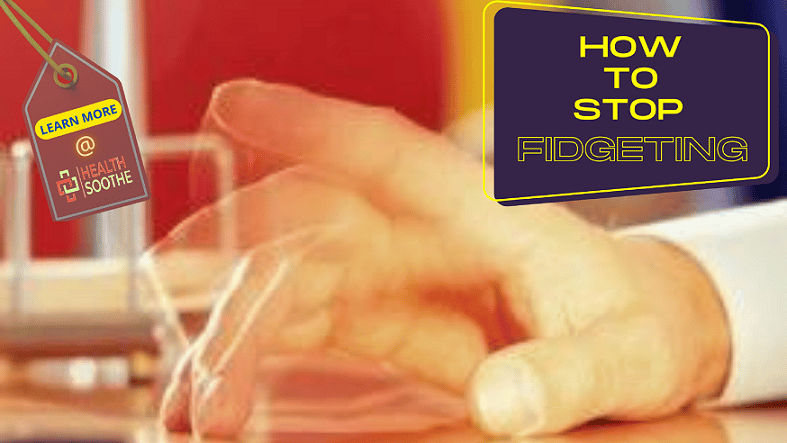

 If you have a tendency to become hyperactive and full of energy when you are frightened or concerned, you may begin to fidget as a consequence. That’s why drinking a lot of coffee or sugar is among the bad things fidgeters can do. There’s a reason why millions of Americans depend on coffee to keep them going throughout the day. It is intended to be stimulating and an energy enhancer. While this may help you get through the day occasionally, it may definitely push your fidgeting tendency into overdrive. Most individuals will not want to stop coffee and sugar cold turkey since it will expose them to a variety of
If you have a tendency to become hyperactive and full of energy when you are frightened or concerned, you may begin to fidget as a consequence. That’s why drinking a lot of coffee or sugar is among the bad things fidgeters can do. There’s a reason why millions of Americans depend on coffee to keep them going throughout the day. It is intended to be stimulating and an energy enhancer. While this may help you get through the day occasionally, it may definitely push your fidgeting tendency into overdrive. Most individuals will not want to stop coffee and sugar cold turkey since it will expose them to a variety of 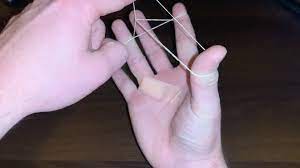 The rubber band technique is one of the ancient “hacks” for breaking bad behaviors such as smoking, nail-biting, or fidgeting. This is how it works:
The rubber band technique is one of the ancient “hacks” for breaking bad behaviors such as smoking, nail-biting, or fidgeting. This is how it works: